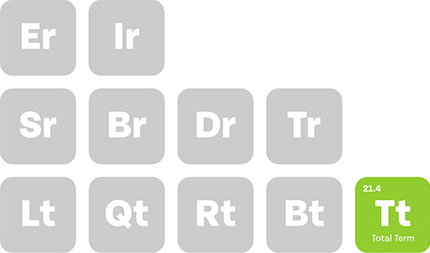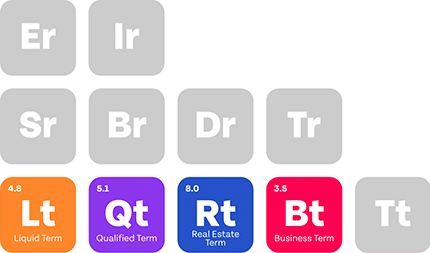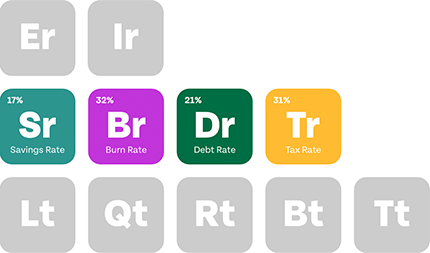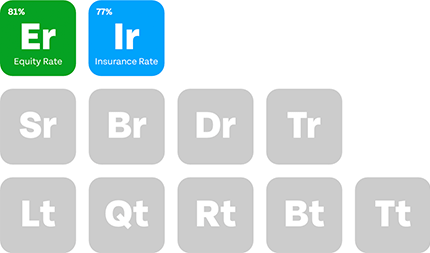Planning your financial future as an anesthesiologist?
This report will help you determine your deserved income range based on your situation.
We’ll then discuss how best to protect this income and plan for the future.
Table of Contents
Highlights
- An anesthesiologist’s base salary is between $300,000 to $500,000
- Earnings largely depend on your experience in practice
- New Jersey is currently the highest-paying state for anesthesiologists, paying over $418,000
- California is the highest paying state, with San Jose anesthesiologist salary mark at over $500,000
- Cardiothoracic Anesthesia is the highest-paying subspecialty, with the top 90th percentile earning up to $400,000
What’s the Average Anesthesiologist’s Salary?
According to Salary.com, anesthesiologists can make anywhere between $373,000 and $488,100, with the median salary being $430,600.
Top 4 Factors That Affect an Anesthesiologist’s Salary
Not all anesthesiologists earn the same salaries. Some may earn significantly more or less than others due to location, working experience, and type of practice. We explain these better below.
1. Years of Experience
A resident can earn $61,300 in their first year, according to Medscape’s 2023 Resident Salary and Debt Report.
Yet, it doesn’t stay the same. With each completed year of residency, the salary will increase slightly.
Payscale.com says anesthesiologists steadily earn more as they gain experience in the field.
The national average annual wage of an entry-level anesthesiologist is $303,000. After gaining five years of experience, the average salary of an anesthesiologist jumps to $309,000.
An anesthesiologist with over ten years of experience can expect to earn $347,000. An anesthesiologist with more than two decades of experience can earn $365,000 or more.
The average pay of anesthesiologists increases with experience. However, the final numbers are also heavily dependent on location and practice type.
2. Location
As with all medical positions, the cost of living and demand come into play when determining an anesthesiologist’s expected earnings. Thus, specific locations pay a higher wage.
From ZipRecruiter data, some of the five top-paying states/cities for anesthesiologist jobs are:
| State | Salary average (pa) | Cities | Salary average (pa) |
| New Jersey | $418,014 | San Jose, CA | $504,031 |
| Wyoming | $414,979 | Oakland, CA | $492,937 |
| Wisconsin | $409,510 | Hayward, CA | $492,100 |
| Washington | $408,484 | Ashland, CA | $492,048 |
| Massachusetts | $406,656 | Antioch, CA | $491,766 |
Five top-paying states/cities for anesthesiologists in the US
The states with the lowest reported average salaries are:
| State | Salary average (pa) |
| Kentucky | $322,371 |
| Michigan | $321,448 |
| Florida | $318,846 |
| Arkansas | $305,852 |
| West Virginia | $274,148 |
Five low-paying states/cities for anesthesiologists in the US
3. Type of Practice
The type of practice that employs an anesthesiologist will also play a big part in salary ranges.
Here’s how the Bureau of Labor Statistics breaks down anesthesiologist salaries by type of practice:
- Outpatient Care Centers: $373,720
- Offices of Other Health Practitioners: $361,350
- Specialty (except Psychiatric and Substance Abuse) Hospitals: $346,020
- Offices of Physicians: $311,030
- General Medical and Surgical Hospitals: $287,880
4. Incentives
Another factor that can help increase an anesthesiologist’s total compensation is how many incentives they earn.
According to Medscape, anesthesiologists receive an average of $68,000 in bonuses during the past year.
Subspecialties for Anesthesiologists & Their Salary
As specialized as anesthesiology is, there are still sub-specialties in this field of medicine. Below are four of the most common and how these rank in terms of compensation.
| Sub-Specialty | Salary |
| Obstetrical Anesthesia | $327,500 per year |
| Recovery and Post-Anesthesia Care | $271,564 per year |
| Cardiothoracic Anesthesia | $355,235 per year |
| Pain Medicine | $271,515 per year |
| Pediatric Anesthesiology | $393,215 per year |
Anesthesiologists’ subspecialties and their annual salaries
Obstetrical Anesthesias
An obstetrical anesthesiologist’s job title includes the use of anesthetics to aid in delivering a baby or reducing the pain of birthing.
This sub-specialty is one of the highest-earning in anesthesiology, according to Payscale. An entry-level obstetrical anesthesiologist can expect to earn an average salary of $327,500 per year.
Recovery and Post post-anesthesia care
After a patient has been under anesthesia, they still need monitoring as they are recovering to ensure there are no complications. There is a sub-specialty in anesthesia that cares for these patients.
Entry-level anesthesiologists with this sub-specialty can start out making $271,564 per year, according to Payscale.
Cardiothoracic Anesthesia
ZipRecruiter has the average income of an entry-level cardiothoracic anesthesiologist at $355,235 per year. However, the earners in the top 90th percentile can earn $400,000 in a year.
These numbers show a wide range of earning potential for a cardiothoracic anesthesiologist based on the aforementioned factors.
Pain Medicine
Anesthesiologists who specialize in pain management earn on the low end of the spectrum for an annual salary. They can begin their career earning $271,515 annually.
Pediatric Anesthesiology
ZipRecruiter has the national average annual salary of a pediatric anesthesiologist listed as $393,215. Yet again, many factors can significantly affect the income of this sub-specializing anesthesiologist.
Learn how anesthesiologist salaries compare to those of other specialties in our Salary and Compensation Library.
Other Things Anesthesiologists Should Consider
The salary you receive depends on many factors, but there are some additional things you need to consider in order to build a stable financial future:
Negotiating Your Anesthesiology Employment Contract
Despite a physician’s confidence in the operating room, negotiating with an employer can be intimidating.
To simplify the process, consider professional assistance for a contract review before finalization. This is necessary whether you’re entering a new position, renewing a contract, renegotiating, or exiting one.
Ensure your employment contract covers these key areas clearly:
- Compensation and benefits
- Duties and responsibilities
- Partnership and ownership agreements
- Begin and end dates
- Restrictive covenants
- Termination details
- Insurance requirements
Contact our contract review team here.
Building a Retirement From Your Anesthesiologist Salary
“The earlier a physician begins to plan their finances toward retirement, the earlier they will be able to retire.” – Physicians Thrive
As an anesthesiologist with a high salary, you have a few options to consider as a retirement fund. These are mostly dependent on your employment form.
For instance, full-time anesthesiologists employed by a healthcare organization will gain a 401k plan.
On another note, anesthesiologists who are self-employed or partners in private practice can still have a 401k plan. They also have additional options to contribute to their retirement fund and qualify for tax deductions.
These include money purchase plans, profit-sharing plans, and defined benefit plans.
Both self- and direct-employed anesthesiologists can benefit from making contributions to a Roth IRA fund.
We’ve detailed everything in our Complete Guide to Physician Retirement Planning.
Having an Effective Tax Planning Strategy
Most people consider doing their taxes as a great way to save money, which is adorable. However, taxes can quickly become complex, especially when you work at such a high-paying job.
An anesthesiologist should always consider enlisting the help of a professional when filing their taxes.
This one step can save you thousands of dollars in the long run. Why?
Professionals know where to look for tax deductions, exemptions, credits, and other ways to save you money– ways that you might be missing.
When you make hundreds of thousands of dollars every year, a professional could help you find ways to lower your tax obligation by thousands.
Choosing the Right Disability Insurance to Protect Your Anesthesiologist Salary
Although it isn’t something that we want to imagine, disability can happen to us all.
What would happen to your finances if you become unable to work due to injury or illness?
Disability insurance comes to the rescue in a situation such as this. It’s a smart investment that will help you protect your income in case of emergencies.
Not all disability insurance policies are created equal. We can help you find the right plan for you. Contact us today.
Maximize Your Earning Potential With Physicians Thrive
An anesthesiologist can earn more or less, depending on several factors, including location and experience, but most importantly, their negotiation skills.
We cannot stress enough the importance of this to medical professionals, which is why Physicians Thrive is dedicated to helping anesthesiologists like you earn the highest salary for your specialty.
Our team of compensation specialists can set you up financially now and in the future. Click here to contact us now.
Subscribe to our email newsletter for expert tips about finances, insurance, employment contracts, and more!







































